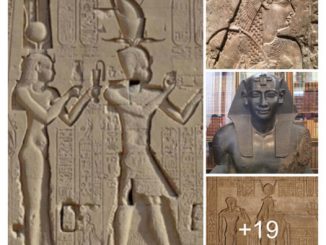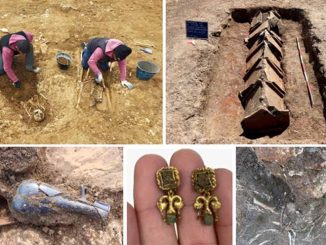A mural dating back 2,500 years has helped reveal the truth about the great Maya archaeological treasure that has been excavated and researched since 2004.
According to Sci-News, the main archaeological treasure is the ruins of the ancient salt industrial complex Paynes Creek Salt Works, including more than 70 sites excavated in a mangrove forest in Belize. The first ruins discovered were also the most mysterious: a series of structures that looked like kitchens used to cook salt, with many sturdy columns, elaborately decorated with murals.

Close-up of the mural revealing Mayan coins – Photo: Rogelio Valencia
The relic also yielded more than 4,000 architectural wooden columns, a canoe and oars, a strange jade tool, meat salting tools, hundreds of ceramic pieces…
But the big mystery was only revealed when a research team led by professor Heather McKillop from Louisiana State University (USA) discovered the mysterious mural. The painting depicts two people, one holding a large cake and giving it to the other, the other holding a spoon and hugging a large basket.
According to Science Daily, the analysis connected the painting to the strange kitchen series and pottery shards with traces of salt in the above monument. The results showed that the painting was depicting a sale, and the cake in the woman’s hand was a large salt cake.
The salt cakes were molded in mysterious kitchen-like factories: people boiled salt water in pots to create salt cakes of a certain weight. And that is… Mayan money. This explains why there are so many salt stoves in the area. Those are essentially ancient mints.
Interesting research has just been published in the scientific journal Journal of Anthropological Archeology.


